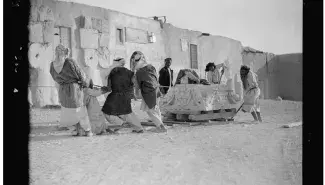
Conférence de clôture
CONFÉRENCE DE CLÔTURE
Vendredi 4 avril 2025, 14h-17h30 Salle 303, Institut d’art et d’archéologie, 3 rue Michelet
Merci de confirmer votre venue par mail à l'adresse DULevy@univ-paris1.fr .
Rethinking Preservation. Diversifying Engagement with the Material Past
Mirjam Brusius (German Historical Institute, Londres)
La conférence (en anglais) sera suivie d’une discussion (en français et en anglais), animée par Yaël Kreplak (HiCSA) et Anne Dressen (ENS – PSL – SACRe)
Informations pratiques
La conférence aura lieu en salle 303, à l’Institut d’art et d’archéologie de la Sorbonne, 3 rue Michelet, 75006 (3ème étage).
Elle se déroulera en anglais, et sera suivie d’une discussion (en français et en anglais).
L’événement est ouvert au public, dans la limite des places disponibles (80 sièges).
Biographie de Mirjam Brusius
Mirjam Brusius est historienne, chercheuse au German Historical Institute de Londres. Elle est spécialiste de l’histoire de l’archéologie et de la photographie, et travaille sur les enjeux de patrimonialisation dans les empires aux XIXe et XXe siècles. Dans ses travaux, elle examine le mouvement de la culture visuelle et matérielle entre l’Europe, l’Asie et l’Afrique : des artefacts anciens qui entrent dans les musées occidentaux à la photographie qui pénètre dans le monde islamique. Ses activités scientifiques (publications, conférences) s’accompagnent de nombreux projets collectifs menés avec des professionnels des musées, des activistes et des artistes, à l’échelle internationale, pour penser et accompagner les transformations de nos rapports collectifs au patrimoine.
En savoir plus
Résumé (en anglais)
Why is the museum (and the heritage institutions that adhere to its concepts) considered to be the safest place to preserve heritage? Collections bombed in Berlin’s museums in WW2, flooded storage rooms in the Louvre, and the recent scandal involving the theft of approximately 2,000 items by a curator at the British Museum, suggest otherwise.
The lecture takes as its starting point the discourse about the destruction and preservation of heritage in and from the Middle East to discuss specific local practices to highlight the heterogeneous ways artifacts are preserved and destroyed, past and present.
Accepted heritage practices continue colonial legacies which emerged in the 19th century, a fact which remains largely unchallenged in public debate and scholarship. Equating ‘The Orient’ with destruction and ‘The West’ with salvage, for instance, as current debate often tends to do, presents a troubling recurrence of these 19th- and 20th-century tropes. This lack of historical self-reflection happens at the expense of more nuanced and potentially more effective understanding and theory of how preservation has been determined over time and from different perspectives. How can preservation practices which do not correspond with established museological ideals and terminologies in Western heritage preservation be acknowledged? And when was heritage even destroyed by Western imperial powers in order to be ‘preserved’? In other words, which consequences does the West’s ‘thirst for heritage’ have for local inhabitants (and worshipers), and how have they engaged with the past in history? The lecture intends to theorize preservation and destruction as historical phenomena, which were rarely exclusive, but rather connected and identified in crucial ways.